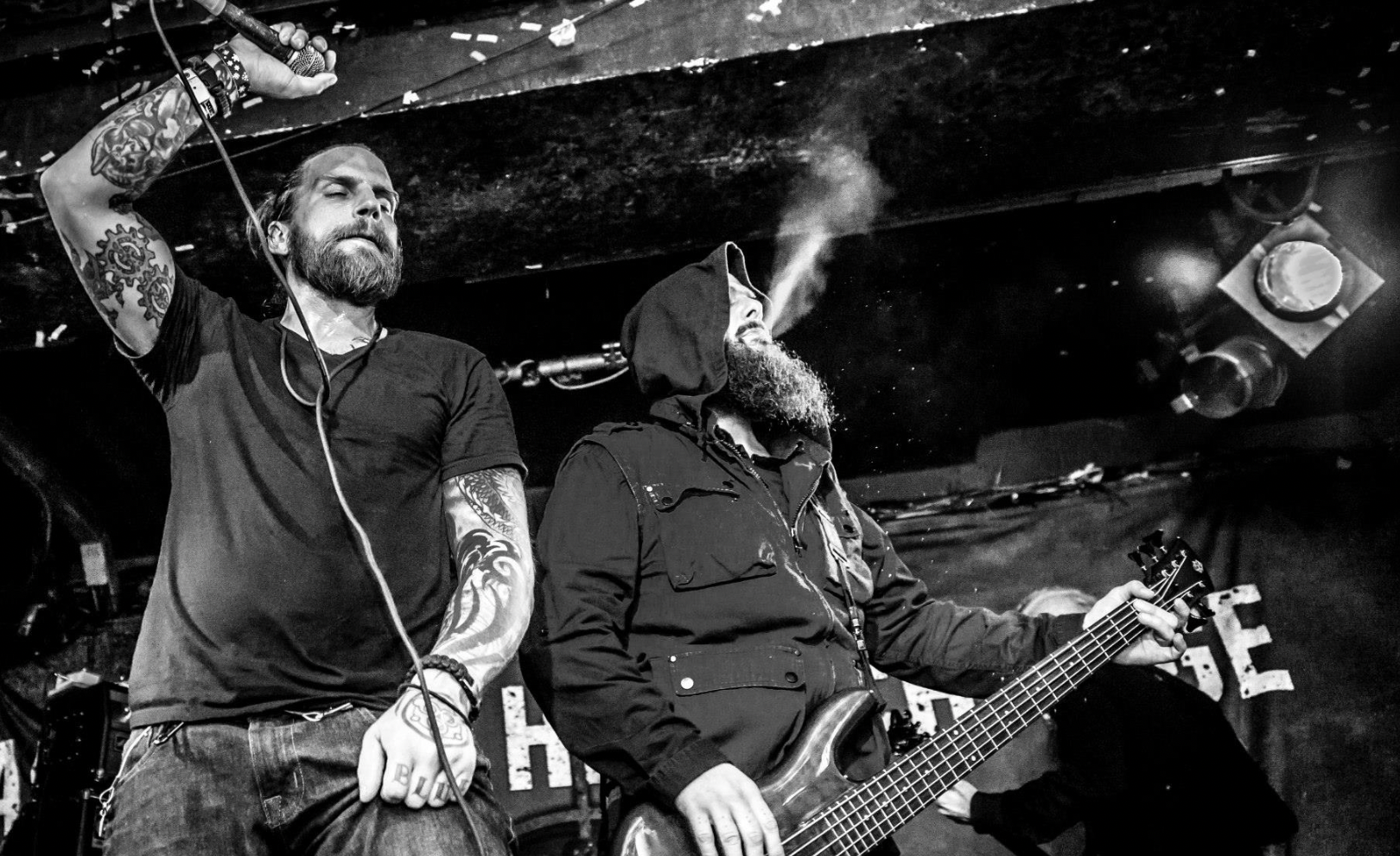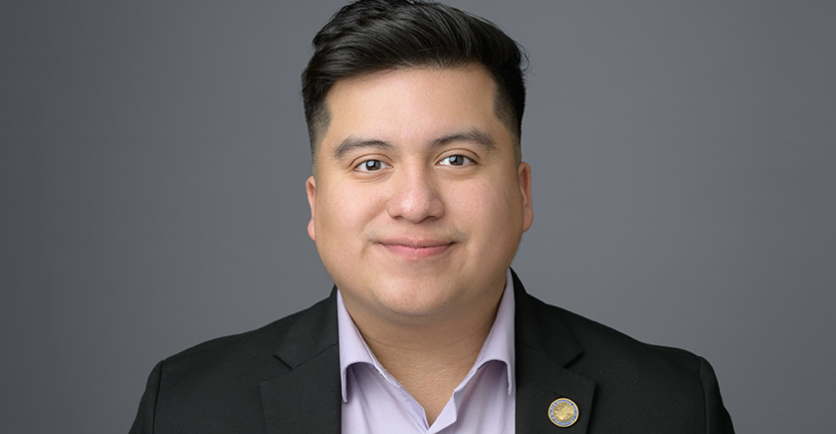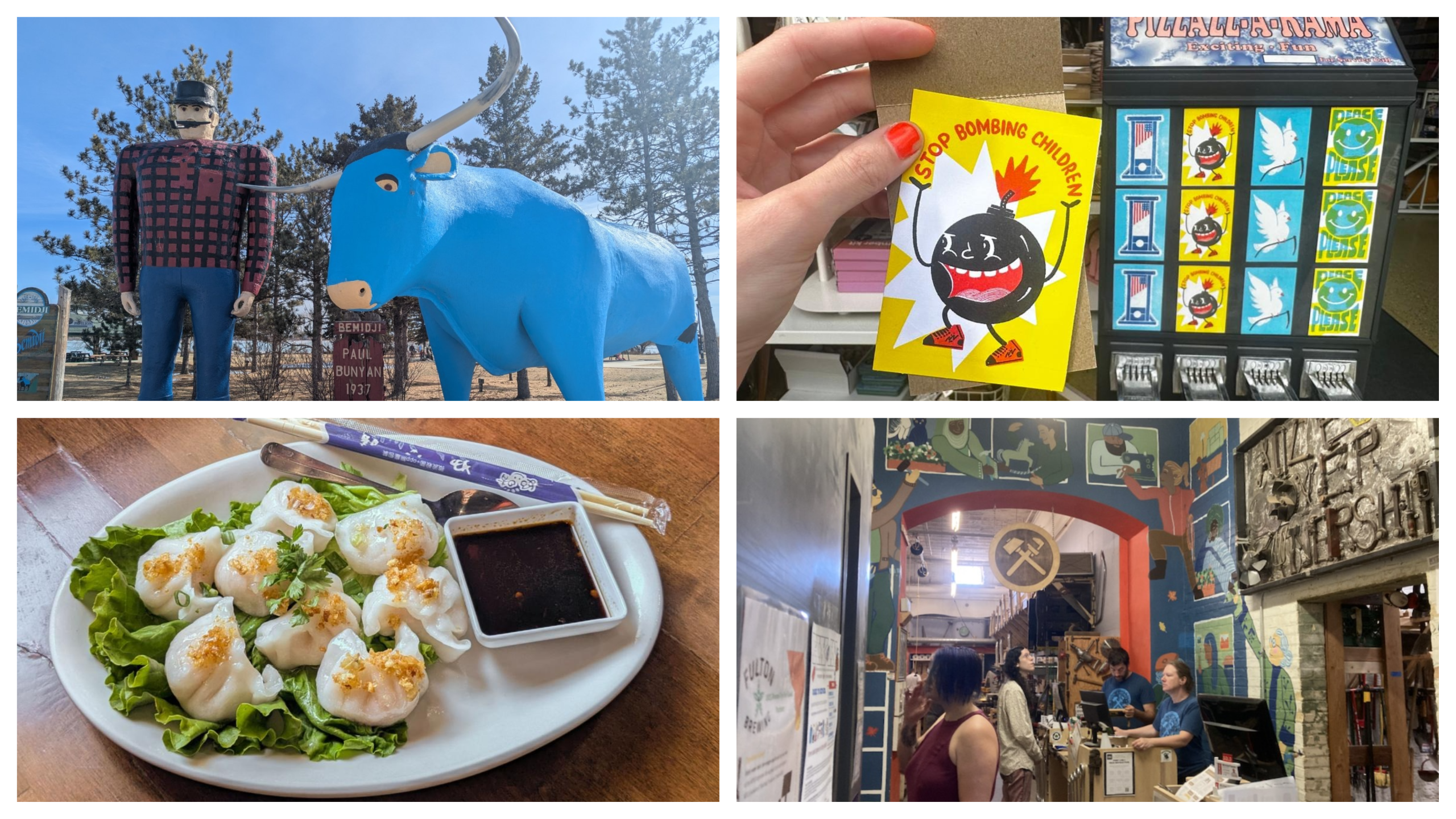It’s around 7 on a Thursday night in October, and Dusty’s is bustling with chatter. After finishing his midday shift at the dimly lit Northeast dive, Justin Fowler unwinds with a drink at the bar, in classic restaurant industry fashion. He makes his friends laugh with Leslie Jordan impressions and reminds customers to tip the musicians.
Twenty years ago, Fowler played keyboard in industrial metal band American Head Charge, touring with Ozzy Osbourne, Slipknot, and System of a Down. What happened?
“Lots of heroin and alcohol,” Fowler says with a nervous laugh, adding, “Not me, particularly.”
Middle-aged and bald, with bushy eyebrows and thick-rimmed square glasses, Fowler holds back tears as he clutches his glass of whiskey. “It becomes difficult when we talk about my band,” he says. “Everything becomes very difficult.”
“How did I go from that to this? Once upon a time, I was 23. And now I'm 45,” Fowler explains. “The world changes around you and the people you're involved with are there and then they're gone for one reason or another. We had a moment, and then we moved on.”
AHC would regularly sell out the First Avenue mainroom in the late ’90s, building regional hype exponentially with their debut album, Trepanation. Their industrial sound put the Twin Cities back into the national metal conversation. Their theatrical live shows included real pig heads on spikes and dozens of television screens. Metalheads recall south Minneapolis afterparties that would rage from Friday night to Sunday morning. And in 1999 AHC flew out to Los Angeles to sign with superproducer Rick Rubin’s American Recordings label.
“Here, locally, they were the biggest of the big. They were the band that everyone spoke of with this scene with metal, with rock, with what was going on at the time,” says James “Pablo” Piper, a director and DJ at Twin Cities rock station 93X. “They were the ones that were going to bust out of Minnesota and become something on the big stage, to the world, and live the dream of being rock stars.”
When drummer Peter Harmon left the band, that paved the way for Fowler, who was working at First Ave at the time, to join. One of the keyboardists, Chris Emery, took the vacant drumming position so AHC had one less keyboardist.
Aaron Zilch, AHC’s other keyboardist from 1999-2003, cheered on the inclusion of his friend Fowler to bandleaders Cameron Heacock and Chad Hanks.
“Little Cameron-Chad meeting like, ‘Hey, so here's the deal, Chris is moving to drums and we're just wondering if you think that you can handle doing all the keyboards and samples yourself or should we have Justin join the band?’” Zilch says. “And I was like, ‘Yes, but also, totally, totally yes.’ Like, ‘Justin deserves to be in the band. Justin would be awesome in the band.’”
Though Fowler joined a little late into the process of AHC’s major label debut, The War of Art, Zilch says, “There’s definitely some prime Justin moments in there.”
The War of Art landed at No. 1 on the Billboard Top Heatseekers chart upon its release, indicating its potential for mainstream crossover appeal. As AHC booked larger venues and worked with their major-label-budget, their shows became only more extravagant. First Ave awarded AHC with a star on their wall of fame.
And yet, AHC peaked, commercially and creatively, with War of Art.
Nursing a cup of coffee in the basement of Caffetto’s in Uptown, Zilch has plenty of passionate ideas about what went right, and wrong, with AHC.
Zilch sports long dark brown hair and wears an ankle-length leather trench coat. After his time with AHC, he moved to Las Vegas and ran a freakshow.
“I met the girl that I lost my virginity to at a mosh pit in Marilyn Manson,” Zilch says, tossing back his head to cackle at the memory of one of his favorite First Ave shows.
AHC released The War of Art on August 28, 2001, horrible timing for a hardcore metal band with slightly suggestive names for their band and new album. Not to mention they once burned an American flag onstage.
Zilch says the 9/11 attacks played a large part in AHC’s demise. “Motherfuckers flew planes into buildings,” he says.
Piper agrees. “After 9/11 happened, there was a thing across radio that any song that had a dark tone like that or spoke about bodies and losing life, radio stations stopped playing it and they pulled it off the radio.”
The drugs didn’t help matters either.
“If you were in the scene, you saw what was going down,” Piper says.
After riding the festival circuit for a couple years, making key appearances on Slipknot’s Pledge of Allegiance tour and at the 2001 Ozzfest, AHC began to fall off. The band’s output slowed, their lineup became a revolving door, and their shows lost their signature dynamism. Rubin let AHC out of their contract, but they lacked the resources for proper artistic independence.
On April 19, 2005, AHC guitarist Bryan Ottoson died on the tour bus from an accidental prescription drug overdose.
Patrick Olsen worked as a DJ at 93x from 1997 to 2011, with a focus on local hard rock. Olsen says that even when AHC deteriorated, their legacy back in Minneapolis survived.
“They helped build up this scene so when they kind of weren’t even around anymore, or as present as they used to be, bands like Black Flood Diesel and some of the other bands that used to open up for them, now headlined the scene,” Olsen says. “The scene didn’t die when Head Charge died.”
Olsen says that AHC reinvigorated the Minneapolis metal scene, which still seemed reliant on '80s hair metal bands. Industrial metal acts with a more rap-influenced sound, now often described as nu metal, had sprung up across the Midwest, from Des Moines to Cleveland.
Zach “Doctor Corpse” Lindsey, who plays in St. Paul-based metal band Impaler, says AHC, who he saw live 11 times and played alongside once, amazed him as a teenage metalhead in the '90s.
“I was just blown away,” Lindsey says. “They would have TVs on stage and some of the TVs would have static on them. Some were showing kill scenes and horror movies, and then there were some porn scenes. It was really cool. I hadn’t really seen anybody do that.”
The porn scenes, while revelatory to those tired of stale Twin Cities bands, also hinted at the misogyny and hetero-masculinity in the scene. For example, at least one AHC show featured topless women standing on stage with duct tape over their nipples.
To AHC’s fans and contemporaries, Fowler stood out from the metal bro culture. He had one shaved eyebrow, occasionally wore more dapper clothes onstage and once rocked pink hair. After AHC, Fowler began working at EagleBolt Bar, a gay bar in downtown Minneapolis.
Harmon, AHC’s original drummer, now works as a chiropractor in Prior Lake, says Fowler contributed much of the band’s artistic vision. “He really helped guide the dream when he became a part of it.”
Dave Rogers, AHC’s former guitarist, who was once arrested in New Jersey for performing naked only weeks after 9/11, now has a wife, kids and a house. He did not return a request for comment.
Hanks died in 2017 from terminal illness. His memorial service featured AHC’s last live performance.
Heacock, the other bandleader and lead vocalist, is effectively off the grid and has no contact with any of his former bandmates, according to Zilch.
In the 23 years since AHC signed with a major label, Fowler is the one who still actively contributes to Minneapolis’s nightlife and music scenes.
“Now that my band is done, the fact that I get to be in a place where people are enjoying their musical freedom,” Fowler says, trailing off as he looks around Dusty’s. “This is such a great place for quiet musical exploits.”







